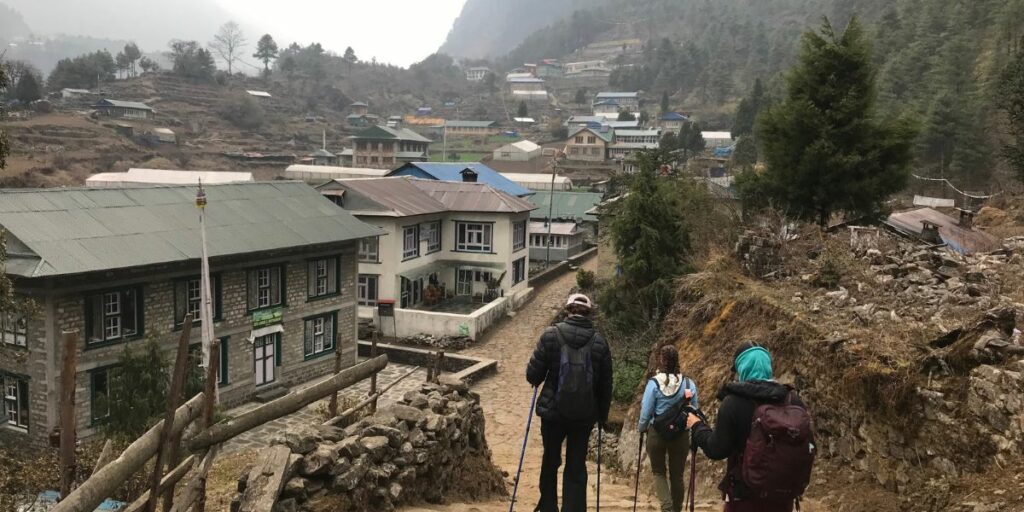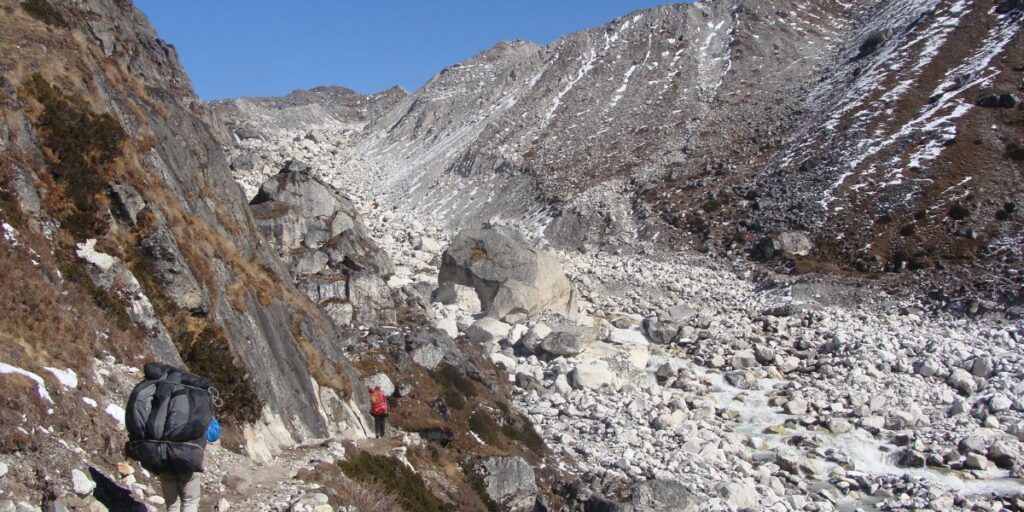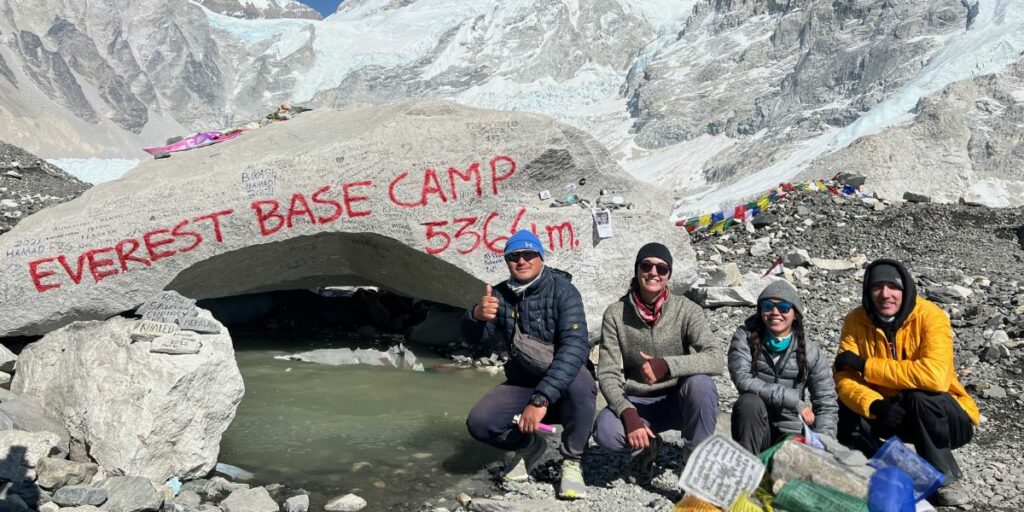Everest Base Camp Trek Permit: A 2025/26 Guide
The dream of standing on the foot of the world’s tallest mountain will no longer be a dream when you plan to trek to Everest Base Camp in Nepal. The journey to Everest Base Camp is a life-changing adventure, but you’ll need to navigate the permit system before you lace up your hiking boots. There are two permits required to trek to Everest Base Camp: the Sagarmatha National Park Entry Permit and the Khumbu Pasang Lhamu Rural Municipality Entry Permit. This guide reflects the latest permit regulations, costs, and procedures as of May 2025, including recent changes implemented by the Nepal Tourism Board. Whether you’re planning a solo trek or joining a guided expedition, understanding the Everest Base Camp permit system will save you time, money, and headaches.
What Permits Are Needed for the Everest Base Camp Trek?
Before setting foot on the trail to Everest Base Camp, you’ll need to secure several official permits. Each serves a specific purpose, from conservation efforts to trekker safety and local community support. Here’s a breakdown of the required documents for your 2025/26 Everest adventure:
Sagarmatha National Park Entry Permit
The Sagarmatha National Park Entry Permit is your gateway to the protected wilderness area that contains Mount Everest. Nepal’s first national park, Sagarmatha National Park, established in 1976 was later designated as a UNESCO World Heritage Site. It covers 1,148 square kilometers of breathtaking Himalayan terrain. This trekking permit to Everest is required for all foreign and local trekkers.
- Purpose: The fees collected help fund conservation efforts, trail maintenance, and waste management within the park. Without this permit, you won’t be allowed to enter the park boundaries, which begin at Monjo village on the classic Everest Base Camp trek route.
- Validity: Typically valid for the duration of your trek within the park boundaries.
- Issuing Authority: Department of National Parks and Wildlife Conservation (DNPWC).
Khumbu Pasang Lhamu Rural Municipality Permit (KPL)
Introduced in 2018 as a replacement for the previous local entry fee, the Khumbu Pasang Lhamu Rural Municipality Permit directly supports the local Sherpa communities in the Everest region. The revenue from this permit helps fund local infrastructure development, schools, health posts, and trail maintenance. Unlike the national park permit, which goes to federal government conservation efforts. The KPL permit ensures that tourism benefits are shared with the local communities who call the Khumbu region home. This permit is checked at the entrance to the Khumbu region, typically at Lukla or Monjo.
- Purpose: Allows you to trek within the Khumbu Pasang Lhamu Rural Municipality area.
- Validity: Usually valid for the duration of your trek within the municipality.
- Issuing Authority: Khumbu Pasang Lhamu Rural Municipality.
TIMS Card (Trekkers’ Information Management System) Permit
The TIMS card system was created to ensure trekker safety and maintain a database of all hikers in Nepal’s mountains. While it was temporarily suspended for individual trekkers in some regions, as of 2025, TIMS has been reinstated for all trekkers heading to the Everest region.
Gaurishankar Conservation Area Project Entry Permit
The Gaurishankar Conservation Area Project (GCAP) Entry Permit is required for trekkers traveling through the Gaurishankar Conservation Area, especially those taking different routes to EBC (e.g., Jiri to EBC). This permit supports local conservation efforts and sustainable tourism in the region. SAARC citizens must pay NPR 1,000 per person for permission to enter the Gaurishankar Conservation Area. The cost of admission for foreigners is NPR 3,000 per person. Similarly, for Nepalese, the Gaurishankar Conservation Area Permit cost is NPR 100, while children below 10 years are free.
Individual Everest Trekking Permit Cost Breakdown for 2025/26

Understanding the exact costs involved in securing your Everest trek permits is essential for budget planning. Here’s the current breakdown for the 2025/26 trekking season:
Sagarmatha National Park Entry Permit Cost
The Sagarmatha National Park permit is valid for a single entry and allows unlimited time within the park boundaries. However, most trekkers typically spend 10-14 days in the region. For the 2025/26 season, the Sagarmatha National Park entry fees are as follows:
| Trekker Category | Cost (NPR) | Approximate USD |
| Foreign Nationals | 3,000 NPR | ~$25 USD |
| SAARC Nationals | 1,500 NPR | ~$12.50 USD |
| Nepali Nationals | 100 NPR | ~$0.85 USD |
| Children under 10 | Free | Free |
Where and How to Obtain Your Sagarmatha National Park Permit?
You can obtain your Sagarmatha National Park Entry Permit through a couple of convenient options. Mountain Routes can efficiently arrange this for you as part of our 14-day EBC trekking package.
Alternatively, independent trekkers can acquire it directly:
- Through a registered trekking agency: Mountain Routes handles the application process, ensuring all necessary documentation is in order, saving you time and hassle.
- In Kathmandu: Visit the Nepal Tourism Board office located in Pradarshani Marg, near Thamel.
- At the Park Entrance (Monjo): It’s also possible to obtain the permit at the park entrance gate in Monjo, but it’s generally recommended to secure it in Kathmandu beforehand to avoid any delays.
Cost for Khumbu Pasang Lhamu Rural Municipality Permit (KPL)
The Khumbu Pasang Lhamu Rural Municipality Permit is a relatively newer requirement, with the fees directly benefiting the local communities and infrastructure within the region you’ll be trekking through. The KPL permit fees for 2025/26 are structured as follows:
| Trekker Category | Cost (NPR) | Approximate USD |
| Foreign Nationals | 2,000 NPR | ~$17 USD |
| SAARC Nationals | 1,000 NPR | ~$8.50 USD |
| Nepali Nationals | 500 NPR | ~$4.25 USD |
Where and how to obtain this permit?
The Khumbu Pasang Lhamu (KPL) Rural Municipality Permit is required for all trekkers entering the Everest Region. This local government permit can be obtained at two main locations: in Lukla, right near the airport at the designated permit counter, and in Monjo, at the checkpoint before entering Sagarmatha National Park. Trekkers should ensure they purchase the permit at one of these points, as it is mandatory and cannot be obtained in Kathmandu. The fee collected helps support local infrastructure, environmental conservation, and community development in the Khumbu region. Required documents include your passport and the permit fee in Nepalese Rupees. No photographs are needed for this permit as of 2025.
How do Mountain Routes help to obtain permits?
At Mountain Routes, we streamline the permit acquisition process for our clients, saving you time and ensuring everything is in order before your trek begins. Our permit services include:
- A collection of all necessary documentation from you in advance
- Processing all permit applications
- Paying all required fees (included in our package prices)
- Providing digital and physical copies of all permits
- Expert guidance on permit requirements and regulations
Required Documents for Everest Trekking Permits
Regardless of whether you apply independently or through Mountain Routes, certain documents are essential for your permit applications. Having these prepared in advance will expedite the process. They are the documents that come under the EBC trek permit requirements.
- Original Passport with a valid Nepal visa.
- Photocopies of your passport and visa.
- Passport-sized photographs (usually 2-4 depending on the permits).
- Permits fees.
- Travel insurance policy details (may or may not be required).
Seasonal Variations in Everest Trekking Permit Costs

The cost of trekking permits for Everest Base Camp remains consistent throughout the year, unlike some other adventure activities in Nepal that have seasonal pricing. However, there are important seasonal considerations that can affect your overall trekking experience and budget.
Peak Season vs. Off-Season Pricing
While the ebc trek permit costs themselves don’t change with the seasons, the overall Everest Base Camp trek cost from Kathmandu will likely be higher during the peak seasons (spring and autumn) due to increased demand for flights, accommodation, and other logistical arrangements.
Spring (March-May) and Autumn (September-November) – Peak Seasons:
- Higher accommodation costs in teahouses (approximately 20-30% more)
- More crowded permit offices (longer wait times)
- Advanced booking is highly recommended
- Greater availability of flights to Lukla
Winter (December-February) and Summer/Monsoon (June-August) – Off-Seasons:
- Lower accommodation rates
- Fewer trekkers and shorter lines at permit offices
- More flexibility with bookings
- Potential flight delays or cancellations due to weather
- Challenging trail conditions (snow in winter, mud/leeches in monsoon)
Latest 2025 Update: The Nepal Tourism Board has introduced an online pre-registration system to reduce crowding at permit offices during peak seasons. While this doesn’t change the permit costs, it does improve the efficiency of the permit acquisition process.
Common Mistakes to Avoid When Getting Permits
Even experienced trekkers can make mistakes when navigating Nepal’s permit system. To ensure a smooth start to your Everest Base Camp adventure, it’s crucial to avoid common pitfalls when obtaining your permits.
Not Carrying Enough Cash (USD/NPR)
While some offices in Kathmandu might accept card payments, it’s always advisable to carry sufficient cash in either US dollars or Nepali Rupees to pay for your permits. Many offices are on cash; you should also be prepared for potential issues with electronic transactions. This is the reason you should always have sufficient Nepalese Rupees as backup. Money can be exchanged at authorized money changers in Kathmandu before heading to the permit offices. We recommend carrying an extra 2,000-3,000 NPR beyond your calculated permit costs for unexpected fees or requirements.
Not Checking Permit Validity Dates
Carefully verify the validity dates on all your permits upon receiving them. Each permit has specific validity periods, and using an expired permit can result in fines or being turned back on your trek. Double-check all dates on your permits before leaving the issuing office. Ensure the dates cover your entire planned trekking period, including buffer days for potential weather delays.
Assuming Climbing Permits Cover EBC Trek
One of the most costly misconceptions is that climbing permits for Mount Everest include access to the base camp trek. Understand that climbing Everest and trekking to Everest Base Camp require completely different permits. The climbing permit for Everest costs over $11,000 USD and involves a completely separate application process through the Ministry of Tourism. But when you are only trekking to EBC, then only two EBC trek permits are required.
Final Tips for a Hassle-Free Everest Base Camp Trek

Planning your Everest Base Camp trek should be an exciting experience. By understanding the permit requirements and avoiding common mistakes, you can ensure a smooth and worry-free journey. Mountain Routes is here to support in every step of the way. Here are some final tips:
- Start the permit process early – During peak seasons, permit offices can be extremely busy, it is recommended to start the permit process earlier.
- Keep digital copies of all permits on your phone or in cloud storage safely.
- Store physical permits in waterproof pouches to protect them from rain and moisture.
- Register with your embassy in Nepal before beginning your trek.
- Purchase comprehensive travel insurance that covers high-altitude trekking and helicopter evacuation.
- Check for last-minute permit changes on the Nepal Tourism Board website before departure.
- Consider working with a reputable agency like Mountain Routes to handle permit logistics.
Mountain Routes has been organizing Everest region treks for over 15 years, and our experienced team stays up-to-date with all permit regulations and requirements. We pride ourselves on transparent pricing and expert guidance throughout the permit process.
Frequently Asked Questions
How much is the permit for Everest Base Camp?
For foreign nationals in 2025/26, the total EBC trek permit cost is approximately $42 USD, which includes:
- Sagarmatha National Park Permit: 3,000 NPR (~$25 USD)
- Khumbu Pasang Lhamu Rural Municipality Permit: 2,000 NPR (~$17 USD)
How much does it cost to go to Everest Base Camp?
The total cost varies depending on your trekking style:
- Budget trek (teahouse accommodation, unguided): $1,300-1,700 USD
- Standard trek (comfortable teahouses, guided): $2,200-2,800 USD
- Luxury trek (best available lodges, private guide): $3,500-4,500 USD
These estimates include permits, flights to/from Lukla, accommodation, meals, and guide/porter services where applicable.
Can you go to Everest Base Camp for free?
No, it’s not possible to legally trek to Everest Base Camp without paying for the required permits. The permit system supports conservation efforts, local communities, and trekker safety infrastructure. Attempting to trek without permits can result in fines of up to ten times the permit cost and immediate removal from the trekking region.
How much does it cost to go to Everest Base Camp by Helicopter?
A helicopter trip to Everest Base Camp costs between $1,100 and $1,250 USD per person on a shared flight basis in 2025/26. Private charters cost approximately $3,500-$4,500 USD. These trips typically include:
- Pickup from your Kathmandu hotel
- Flight to Lukla or directly to the Everest region
- Landing at Kala Patthar (5,545m) for views of Everest
- Brief stop near Everest Base Camp (landing at the actual base camp is not permitted)
- Return flight to Kathmandu
Helicopter trips still require permits, which are arranged by the helicopter company and included in the package price.
